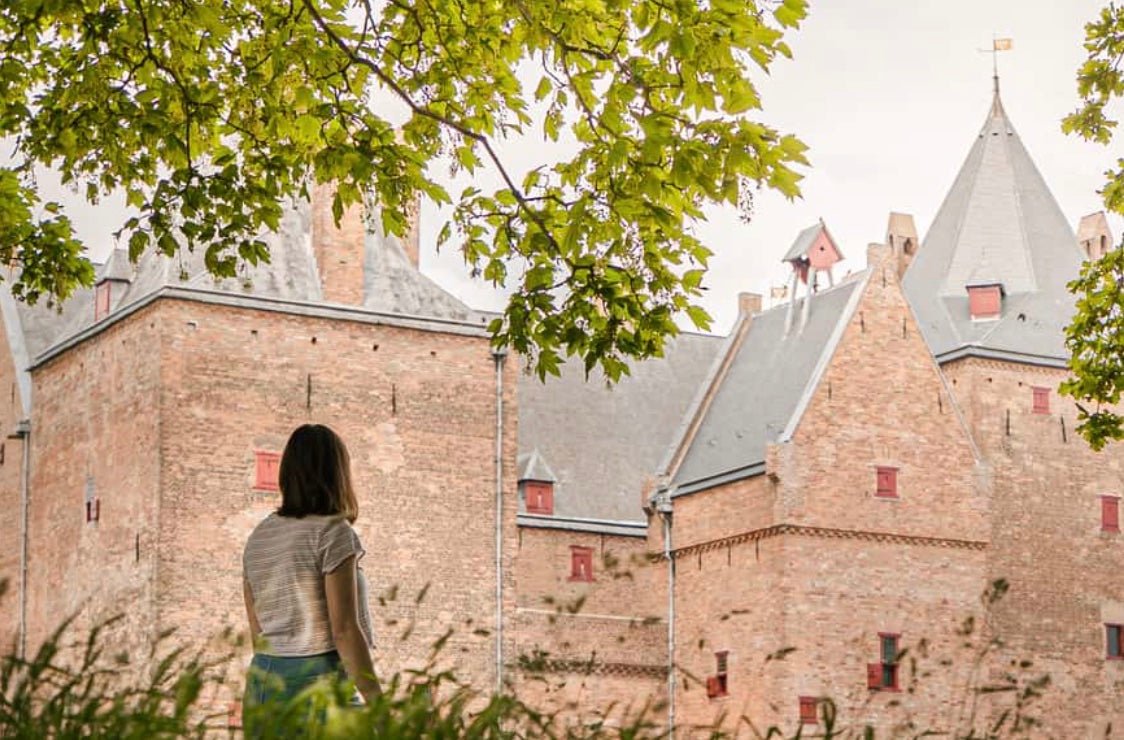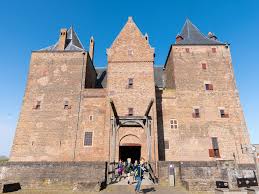Slot Loevestein Kasteel Museum
Slot Loevestein Kasteel Museum
Today, Slot Loevestein operates as a museum offering visitors an immersive journey through Dutch history. Exhibits focus on the castle's medieval origins, its role in the Dutch Waterline, and the life and works of Hugo Grotius. The museum houses a collection that includes archaeological finds, historical books (many by Grotius), paintings, and various artifacts related to the castle's past
Opening hours
Opening hours
- Daily from 10:00 AM to 5:00 PM
How to get there
How to get there
Poederoijen, Netherlands
Prices from
Prices from
From €17.50


More details
Slot Loevestein – A castle full of stories
Slot Loevestein is a medieval castle located where the Maas and Waal rivers meet. It is one of the most famous castles in the Netherlands. The museum tells stories about knights, prisoners, and freedom.
What to See
- Historic castle rooms with armor, weapons, and furniture
- The cell where Hugo de Groot escaped in a book chest
- Interactive exhibits about law, war, and liberty
- The outer fortress with towers and defense walls
- Family-friendly routes and activities for children
Why Visit
- Walk through a real medieval fortress
- Learn about the famous prison escape of Hugo de Groot
- Enjoy nature walks around the river and fortress
- Fun and educational for all ages
The Museum
Slot Loevestein was built in the 14th century as a defense castle. It later became a state prison and a symbol of freedom. Today, the castle is a museum about Dutch history, law, and human rights.
Visitor Information
- Address: Loevestein 1, Poederoijen
- Open: Daily during holidays; Tuesday to Sunday otherwise
- Tickets: €16.50 (adults), €11.50 (ages 4–18), free under 4
- Free with Museumkaart
- Facilities: Café, shop, walking trails, and picnic areas
Slot Loevestein is perfect for visitors who want to explore medieval history, nature, and stories of freedom.
Some Highlights of Slot Loevestein Kasteel Museum

Opposites | Divide or Unite
Polarization seems to be a thing of our time. It seems like opinions are getting harsher. But this is not new. In the 17th century in Holland, two groups stood diametrically opposed to each other as opposites. People no longer saw each other as fellow human beings, but only as the enemy. Political opponents were imprisoned at Slot Loevestein. The exhibition “Opposites” shows what polarization is, how it can occur and what consequences it can have. What can we learn from history? When does having different opinions turn into hostility? And can we prevent this? By connecting the past and present, we try to answer this. You will be challenged to think about your own ideas. There is a children’s line with fun assignments and games to introduce the subject in an approachable way.

Hugo Grotius
Hugo Grotius is best known for his famous escape from Loevestein Castle in 1621, where he was imprisoned for his political views. He cleverly hid inside a chest of books regularly brought to him, allowing him to escape to Antwerp and eventually Paris. This daring escape marked the end of his life sentence and the beginning of his exile.

1001 bombs and grenades
Loevestein Castle is more than a medieval castle. It was the state prison in the Netherlands. And it is also a fortress in the Dutch Waterline. With its earthen walls, double canals, bomb-proof shelter and the street with soldiers’ houses, the fortress still exudes the atmosphere of an eighteenth-century soldier’s village. Explore and learn musket shooting, explode gunpowder and flood the fortress with the water game.
Other Dutch Museums
-
Noordbrabants Museum Den Bosch
Regular price €0,00 EURRegular priceUnit price / per -
Van Gogh Museum Amsterdam
Regular price €0,00 EURRegular priceUnit price / per -
The Kröller-Müller Museum Otterlo
Regular price €0,00 EURRegular priceUnit price / per -
The Rijksmuseum Amsterdam
Regular price €0,00 EURRegular priceUnit price / per






